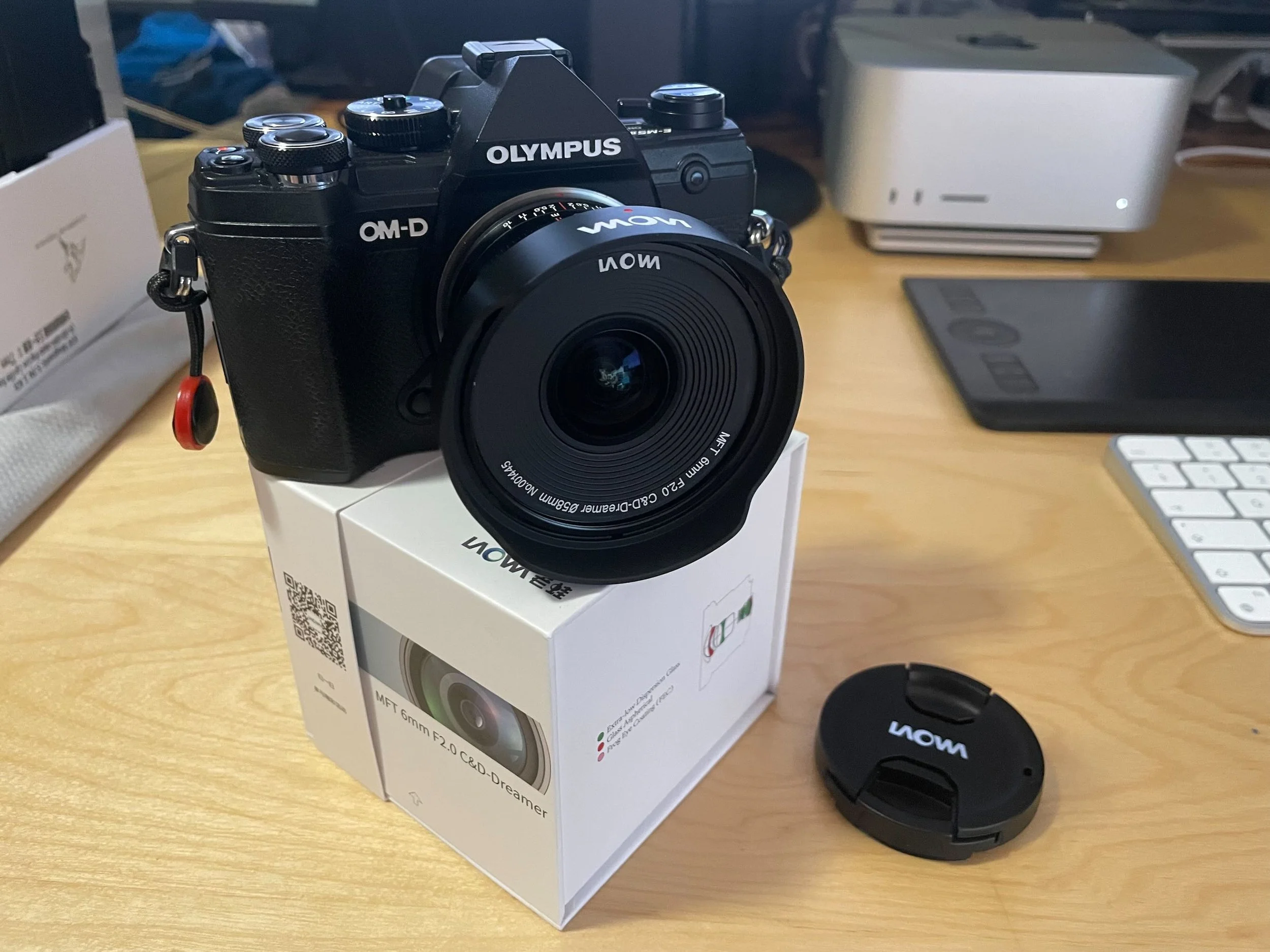Laowa 6mm for Micro Four Thirds
Generally I’ve stayed away from writing too much about gear in recent years, but finally it seems to be what people want to read, so while I have no interest or skill in objective testing (haha), if I’ve got something subjective to say, that might be of wider interest, why not.
So, today I’m going to write about a lens I have quite literally just received, the (deep breath) Laowa MFT 6mm f2.0 C&D-Dreamer lens by Venus Optics. I’ve been eyeing ultra wide angle primes for a while, to complement or sometimes replace my Olympus 8-25 f/4, and while the Lumx 9mm was a strong candidate, it seemed more sensible to go for something wider. This review by the excellent David Griff convinced me to give the Laowa a chance. Indeed, I would echo what he said at the very beginning of his video - if you’re interested in an ultra wide prime for Micro Four Thirds, just stop reading already and buy this one (although finding it may be a little tricky).
The Laowa 6mm lens on the E-M5 MkIII sitting on top of its packaging.
First impressions are distinctly positive. The packaging is very attractive in both design and construction, indeed several notches above what OM Digital Solutions are now doing. This may seem superficial and unimportant, but I think to some extent it indicates that the company has a sense of pride in its products and wants to project a quality image. This is immediately reinforced by opening the box and pulling out the lens. I was immediately impressed by the high quality all-metal construction and the general feel. The only other third party MFT lenses I’ve owned are the Sigma 60mm and Rokinon 7.5 fisheye, and this Laowa lens is built to a higher standard than both of these, much higher in the case of the Rokinon. It could easily be labelled “OM System” or “Lumix”. It’s small, about the same size as the Olympus f/1.8 primes, and quite lightweight although with certain heft. It balances very well on the E-M5 body. Somewhat remarkably for such a wide angle lens, it takes filters, with a 58mm thread. The lens hood (also metal) is actually detachable, although it is delivered attached. It does take quite a strong twist to remove it.
One huge plus on this lens are the electronic contacts which enable aperture control and relay full lens EXIF data to the saved file. Focus remains manual, but for a 6mm focal length that is no hardship - just so long as you actually remember to focus! Therefore there is no aperture ring, and the only moving part is the smooth, precise focussing ring with (obviously) hard stops. The minimum focussing distance is 9cm - which is just 1.3cm from the edge of the lens hood.
So, anyway, how well does it work? I took the lens, attached to the E-M5 MkIII, for short stroll around the border town of Chiasso yesterday evening. To be honest Chiasso is a dull, depressing and run-down place, and presents quite a challenge in finding interesting photography. I actually found that the unfamiliar 6mm ultra wide angle helped a lot in this regard. Here are a few samples:
1/160s, f/4
1/160s, f/4
1/250s, f/4
1/60s, f/6.3
The lens was practically touching the plant here! - 1/60s, f/8
The first thing that really struck me was the impressively low distortion. Correction appears to be fully optical: neither Capture One or DxO have a profile for this lens, and enabling “Manufacture Correction” in Capture One, which normally would enable any Micro Four Thirds lens built-in correction, should no noticeable difference over “Generic”. Any distortion visible I think is 99% down to technique - these were all handheld, and any slight deviation from level/vertical will get hugely magnified at this focal length. Of course, often that is a desired effect at wide angle. I’m not huge on pixel peeping, but to my eyes the images look as sharp in the corners as they are in the centre, which is “very sharp”. So all in all very impressive technical performance.
From these first few shots, the lens appears to give a quite distinctive look. My eyes tend to glaze over when people go on about how a lens “draws” or how it is “cinematic” or whatever, either because I’m too dim to understand or because it’s all hocus-pocus (to be polite) - or more likely a bit of both. But the Laowa 6mm does seem to give a look more similar to the Ricoh GR lenses than the baseline m.Zuiko look. Either way I like it.
So, for me, this looks like a good choice. Laowa / Venus Optics seems to be a company to watch, one not afraid to push the boundaries a bit. Maybe in an alternate universe, they bought the Olympus camera division instead of JIP. That could have been interesting.





